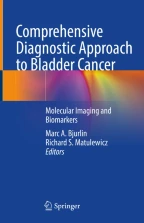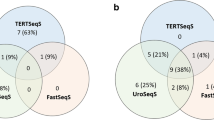Urine Cytology in the Clinical Management of Bladder Cancer

Urinary tract cytology, which involves microscopic examination of exfoliated cells within a patient’s urine, continues to play an important role in the diagnosis and surveillance of urothelial malignancies. Advances in cytopathological technique as well as the advent of robust classification systems such as the Paris System have led to improvements in the diagnostic accuracy and reliability of urinary tract cytology to identify clinically significant urothelial carcinoma. Overall, urinary tract cytology has a low sensitivity and high specificity for the detection of any urothelial carcinoma of the bladder. However, when stratified by pathologic grade, urinary tract cytology has significantly higher sensitivity and specificity for high-grade disease. As such, guidelines currently support the use of urinary tract cytology in the surveillance of intermediate and high-risk urothelial carcinoma of the bladder, but not in low-risk disease. Likewise, urinary tract cytology is not recommended in the evaluation of patients with microscopic hematuria but may be considered in patients with gross hematuria. Although cystoscopy continues to be the gold standard for diagnosis and surveillance of patients with bladder cancer, urinary tract cytology can serve as a valuable and cost-effective adjunctive test, particularly in high-risk patients.
This is a preview of subscription content, log in via an institution to check access.
Access this chapter
Subscribe and save
Springer+ Basic
€32.70 /Month
- Get 10 units per month
- Download Article/Chapter or eBook
- 1 Unit = 1 Article or 1 Chapter
- Cancel anytime
Buy Now
Price includes VAT (France)
eBook EUR 85.59 Price includes VAT (France)
Softcover Book EUR 105.49 Price includes VAT (France)
Hardcover Book EUR 147.69 Price includes VAT (France)
Tax calculation will be finalised at checkout
Purchases are for personal use only
Similar content being viewed by others

Performance of novel non-invasive urine assay UroSEEK in cohorts of equivocal urine cytology
Article 03 September 2019

Molecular Pathology of Urine Cytology
Chapter © 2016

How to Interpret Findings of a Urine Cytology Test
Chapter © 2013
References
- Flezar MS. Urine and bladder washing cytology for detection of urothelial carcinoma: standard test with new possibilities. Radiol Oncol. 2010;44(4):207–14. ArticleGoogle Scholar
- Brown FM. Urine cytology. It is still the gold standard for screening? Urol Clin North Am. 2000;27(1):25–37. ArticleCASGoogle Scholar
- Papanicolaou GN, Marshall VF. Urine sediment smears as a diagnostic procedure in cancers of the urinary tract. Science. 1945;101(2629):519–20. ArticleCASGoogle Scholar
- Owens CL, Vandenbussche CJ, Burroughs FH, Rosenthal DL. A review of reporting systems and terminology for urine cytology. Cancer Cytopathol. 2013;121(1):9–14. ArticleGoogle Scholar
- Pierconti F, Rossi ED, Straccia P, Fadda G, Larocca LM, Bassi PF, et al. The risk of malignancy of atypical urothelial cells of undetermined significance in patients treated with chemohyperthermia or electromotive drug administration. Cancer Cytopathol. 2018;126(3):200–6. ArticleCASGoogle Scholar
- Zhang ML, Rosenthal DL, VandenBussche CJ. The cytomorphological features of low-grade urothelial neoplasms vary by specimen type. Cancer Cytopathol. 2016;124(8):552–64. ArticleCASGoogle Scholar
- VandenBussche CJ. A review of the Paris system for reporting urinary cytology. Cytopathology. 2016;27(3):153–6. ArticleCASGoogle Scholar
- Cowan ML, VandenBussche CJ. The Paris system for reporting urinary cytology: early review of the literature reveals successes and rare shortcomings. J Am Soc Cytopathol. 2018;7(4):185–94. ArticleGoogle Scholar
- Murphy WM, Crabtree WN, Jukkola AF, Soloway MS. The diagnostic value of urine versus bladder washing in patients with bladder cancer. J Urol. 1981;126(3):320. ArticleCASGoogle Scholar
- Wegelin O, Bartels DWM, Tromp E, Kuypers KC, van Melick HHE. The effects of instrumentation on urine cytology and CK-20 analysis for the detection of bladder cancer. Urology. 2015;86(4):772–6. ArticleGoogle Scholar
- McVey RJ, Persad RV, Brown SC, Robinson E, Payne SR. How long is urinary cytology abnormal after flexible cystoscopy? BJU Int. 2004;94(4):548–51. ArticleGoogle Scholar
- Todenhöfer T, Hennenlotter J, Kühs U, Tews V, Gakis G, Aufderklamm S, et al. Influence of urinary tract instrumentation and inflammation on the performance of urine markers for the detection of bladder cancer. Urology. 2012;79(3):620–5. ArticleGoogle Scholar
- Frees S, Bidnur S, Metcalfe M, Raven P, Chavez-Munoz C, Moskalev I, et al. Effect of contrast media on urinary cytopathology specimens. Can Urol Assoc J = Journal de l'Association des urologues du Canada. 2016;10(7–8):228–33 Google Scholar
- Knapik JA, WM Murphy. Urethral wash cytopathology for monitoring patients after cystoprostatectomy with urinary diversion. Cancer. 2003;99(6):352–6. Google Scholar
- Chan Y, Fisher P, Tilki D, Evans CP. Urethral recurrence after cystectomy: current preventative measures, diagnosis and management. BJU Int. 2016;117(4):563–9. Google Scholar
- Sherwood JB, Sagalowsky AI. The diagnosis and treatment of urethral recurrence after radical cystectomy. Urol Oncol. 2006;24(4):356–61. Google Scholar
- Clark PE, Hall MC. Contemporary management of the urethra in patients after radical cystectomy for bladder cancer. Urol Clin North Am. 2005;32(2):199–206. Google Scholar
- Lin DW, Herr HW, Dalbagni G. Value of urethral wash cytology in the retained male urethra after radical cystoprostatectomy. J Urol. 2003;169(3):961–3. Google Scholar
- Boorjian SA, Kim SP, Weight CJ, Cheville JC, Thapa P, Frank I. Risk factors and outcomes of urethral recurrence following radical cystectomy. Eur Urol. 2011;60(6):1266–72. Google Scholar
- VandenBussche CJ, Rosenthal DL, Olson MT. Adequacy in voided urine cytology specimens: the role of volume and a repeat void upon predictive values for high-grade urothelial carcinoma. Cancer Cytopathol. 2016;124(3):174–80. ArticleGoogle Scholar
- Jubber I, Shariat SF, Conroy S, Tan WS, Gordon PC, Lotan Y, et al. Non-visible haematuria for the detection of bladder, upper tract, and kidney cancer: an updated systematic review and meta-analysis. Eur Urol. 2020;77(5):583–98. Google Scholar
- Farrow GM. Urine cytology in the detection of bladder cancer: a critical approach. J Occup Med. 1990;32(9):817–21. Google Scholar
- Grossman HB, Soloway M, Messing E, Katz G, Stein B, Kassabian V, et al. Surveillance for recurrent bladder cancer using a point-of-care proteomic assay. JAMA. 2006;295(3):299–305. Google Scholar
- Chang SS, Boorjian SA, Chou R, Clark PE, Daneshmand S, Konety BR, et al. Diagnosis and treatment of non-muscle invasive bladder cancer: AUA/SUO guideline. J Urol. 2016;196(4):1021–9. Google Scholar
- Tan WS, Sarpong R, Khetrapal P, Rodney S, Mostafid H, Cresswell J, et al. Does urinary cytology have a role in haematuria investigations? BJU Int. 2019;123(1):74–81. Google Scholar
- Garbar C, Mascaux C, E W. Is urinary tract cytology still useful for diagnosis of bladder carcinomas? A large series of 592 bladder washings using a five-category classification of different cytological diagnoses. Cytopathology. 2007;18(2):79–83. Google Scholar
- Halling KC, King W, Sokolova IA, Meyer RG, Burkhardt HM, Halling AC, et al. A comparison of cytology and fluorescence in situ hybridization for the detection of urothelial carcinoma. J Urol. 2000;164(5):1768–75. Google Scholar
- Moonen PM, Merkx GF, Peelen P, Karthaus HF, Smeets DF, Witjes JA. UroVysion compared with cytology and quantitative cytology in the surveillance of non-muscle-invasive bladder cancer. Eur Urol. 2007;51(5):1275–80. Google Scholar
- Strittmatter F, Buchner A, Karl A, Sommer M-L, Straub J, Tilki D, et al. Individual learning curve reduces the clinical value of urinary cytology. Clin Genitourin Cancer. 2011;9(1):22–6. ArticleGoogle Scholar
- Barocas DA, Boorjian SA, Alvarez RD, Downs TM, Gross CP, Hamilton BD, et al. Microhematuria: AUA/SUFU guideline. J Urol. 2020;204(4):778. Google Scholar
- NICE. 2020 Surveillance of suspected cancer: recognition and referral (NICE guideline NG12). 2020. Google Scholar
- Kassouf W, Aprikian A, Black P, Kulkarni G, Izawa J, Eapen L, et al. Recommendations for the improvement of bladder cancer quality of care in Canada: a consensus document reviewed and endorsed by Bladder Cancer Canada (BCC), Canadian Urologic Oncology Group (CUOG), and Canadian Urological Association (CUA), December 2015. Can Urol Assoc J = Journal de l'Association des urologues du Canada. 2016;10(1–2):E46–E80. Google Scholar
- Mishriki SF, Aboumarzouk O, Vint R, Grimsley SJ, Lam T, Somani B. Routine urine cytology has no role in hematuria investigations. J Urol. 2013;189(4):1255–8. Google Scholar
- Sutton JM. Evaluation of hematuria in adults. JAMA. 1990;263(18):2475–80. ArticleCASGoogle Scholar
- Chang SS, Bochner BH, Chou R, Dreicer R, Kamat AM, Lerner SP, et al. Treatment of non-metastatic muscle-invasive bladder cancer: AUA/ASCO/ASTRO/SUO guideline. J Urol. 2017;198(3):552–9. Google Scholar
- Palou J, Brausi M, Catto JWF. Management of patients with normal cystoscopy but positive cytology or urine markers. Euro Urol Oncol. 2020;3(4):548–54. Google Scholar
- Daneshmand S, Schuckman AK, Bochner BH, Cookson MS, Downs TM, Gomella LG, et al. Hexaminolevulinate blue-light cystoscopy in non-muscle-invasive bladder cancer: review of the clinical evidence and consensus statement on appropriate use in the USA. Nat Rev Urol. 2014;11(10):589–96. Google Scholar
- Witjes JA, Babjuk M, Gontero P, Jacqmin D, Karl A, Kruck S, et al. Clinical and cost-effectiveness of hexaminolevulinate-guided blue-light cystoscopy: evidence review and updated expert recommendations. Eur Urol. 2014;66(5):863–71. Google Scholar
- Palou J, Sylvester RJ, Faba OR, Parada R, Peña JA, Algaba F, et al. Female gender and carcinoma in situ in the prostatic urethra are prognostic factors for recurrence, progression, and disease-specific mortality in T1G3 bladder cancer patients treated with bacillus Calmette-Guérin. Eur Urol. 2012;62(1):118–25. Google Scholar
- Herr HW, SM D. Prostatic tumor relapse in patients with superficial bladder tumors: 15-year outcome. J Urol. 1999;161(6):1854–7. Google Scholar
- Herr HW. Extravesical tumor relapse in patients with superficial bladder tumors. J Clin Oncol Off J Am Soc Clin Oncol. 1998;16(3):1099–102. Google Scholar
Author information
Authors and Affiliations
- The James Buchannan Brady Urological Institute, The Johns Hopkins Hospital, Baltimore, MD, USA Andrew T. Gabrielson & Max R. Kates
- Department of Pathology, Johns Hopkins Hospital, Baltimore, MD, USA Christopher J. VandenBussche
- Andrew T. Gabrielson


